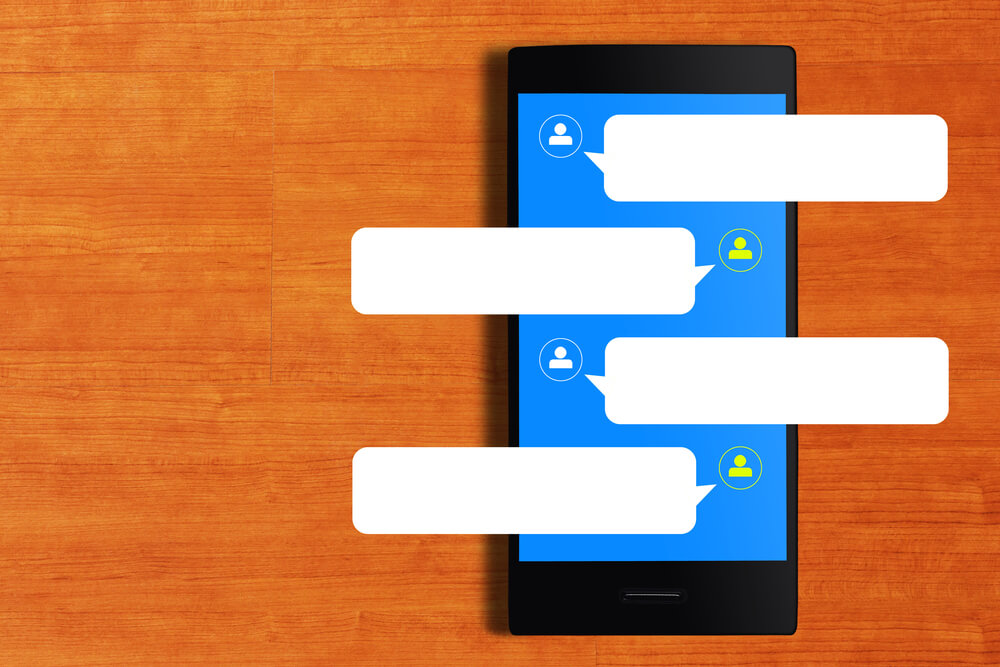Recruitment is a critical process for any organization, as it involves attracting and hiring the right talent to support the growth and success of the company. However, with the increasing volume of job applicants, it can be a challenging and time-consuming task for HR departments and recruiters. To streamline this process and make it more efficient, many organizations are turning to chatbots in recruitment.
A recruitment chatbot is an AI-powered conversational tool that helps automate various aspects of the recruitment process. From initial candidate screening to scheduling interviews, chatbots can handle a wide range of tasks, freeing up time for HR professionals to focus on more strategic initiatives. These tools also provide a better candidate experience by offering quick and efficient responses, increasing the chances of attracting top talent.
In this blog, we will provide an overview of chatbots in recruitment and examine the benefits and challenges of implementing such a tool. We will also explore the different types of recruitment chatbots and how they work to streamline the recruitment process. By the end of this blog, readers will have a clear understanding of how chatbots can help organizations find the right talent while improving the overall recruitment experience.
What are Chatbots in Recruitment?
Chatbots in recruitment are AI-powered conversational tools that automate various aspects of the recruitment process. These tools can handle a wide range of tasks, including initial candidate screening, scheduling interviews, and even answering frequently asked questions from job applicants. They are designed to provide quick and efficient responses, making the recruitment process smoother and more efficient for both HR professionals and candidates.
How do AI-powered Chatbots Work in Recruitment?
AI-powered chatbots in recruitment use natural language processing (NLP) and machine learning (ML) algorithms to understand and respond to job applicants’ questions and requests. They can be integrated with various recruitment software and tools, such as applicant tracking systems (ATS), calendar scheduling software, and email. This integration allows chatbots to access relevant information and perform various tasks, such as scheduling interviews, answering questions, and providing updates to candidates.
Types of Recruitment Chatbots
There are several types of recruitment chatbots, each designed to meet specific needs and requirements. Some of the most common types include:
Pre-screening Chatbots:
These chatbots help organizations screen and assess large volumes of job applicants by conducting initial interviews and assessments. They can also help organizations identify the best-suited candidates for a particular role.
Interview Scheduling Chatbots:
These chatbots assist with scheduling interviews and coordinating with candidates. They can also help HR professionals manage their calendars and avoid scheduling conflicts.
Candidate Communication Chatbots:
These chatbots provide quick and efficient responses to candidates’ frequently asked questions and help maintain open lines of communication throughout the recruitment process.
Offer Letter Chatbots:
These chatbots automate the process of sending and tracking offer letters, helping organizations ensure that candidates receive their offers in a timely and efficient manner.
Onboarding Chatbots:
These chatbots assist with the onboarding process, helping new hires get up to speed and integrated into the organization.
5 Key Challenges for Handling a High Volume Candidate Pool
Inability to Respond to All Candidates: With a large volume of job applicants, it can be challenging for HR professionals to respond to every single candidate in a timely and efficient manner. This can lead to long wait times, frustrated candidates, and a negative impact on the organization's reputation.
Lack of Multi-Channel Support: Candidates expect to communicate with organizations through multiple channels, such as email, phone, chat, and social media. However, without multi-channel support, HR professionals may struggle to respond to candidates in real-time, leading to a poor candidate experience.
Friction in the Apply Process: A complex and lengthy application process can result in a high number of incomplete applications and frustrated candidates. This can make it difficult for HR professionals to effectively screen and assess candidates, leading to a longer and more time-consuming recruitment process.
Inability to Source Candidates: Finding and attracting top talent can be a challenge, especially when dealing with a high volume of candidates. HR professionals need to be able to effectively source and identify the right candidates for each role, which can be a challenge when dealing with a large candidate pool.
Inconsistent Candidate Experience: A poor candidate experience can have a significant impact on the reputation of an organization. Without a consistent and streamlined recruitment process, candidates may have different experiences throughout the recruitment process, leading to a negative impact on the organization's brand and reputation.
To overcome these challenges, organizations need to implement efficient and effective recruitment processes and tools. For instance, the use of chatbots in recruitment can help automate routine tasks, provide quick and efficient responses to candidates, and enhance data and analytics capabilities. Additionally, organizations can consider implementing an applicant tracking system (ATS) to streamline the recruitment process and provide a consistent candidate experience.
In conclusion, handling a high volume candidate pool can be a challenging task for HR professionals, but with the right tools and processes in place, organizations can overcome these challenges and attract top talent. By automating routine tasks, providing quick and efficient responses, and implementing a consistent recruitment process, organizations can enhance the candidate experience, increase efficiency, and support the growth and success of their business.
 Benefits of Implementing a Recruitment Chatbot
Benefits of Implementing a Recruitment Chatbot
Recruitment chatbots like Talview recruitment chatbot are changing the way organizations approach the recruitment process. These chatbots are powered by AI and are trained to respond to all common candidate queries in real-time, providing a fast, efficient, and immersive candidate experience. Here are the main benefits of implementing a recruitment chatbot.
Increased Efficiency:
One of the biggest benefits of a recruitment chatbot is the ability to automate routine tasks and reduce the time and effort spent on recruitment. Talview's recruitment chatbot is designed to handle high volumes of candidates, ensuring that no applications are lost, and every candidate is screened efficiently and effectively. This includes reducing the time spent on manual data entry and scheduling, improving the accuracy of candidate information, and providing quick and efficient responses to candidate queries. The chatbot also provides valuable data and analytics capabilities, helping organizations to make informed decisions about their recruitment process.
Enhanced Candidate Experience:
A recruitment chatbot provides an enhanced candidate experience, making the recruitment process more efficient and convenient for candidates. Talview's recruitment chatbot is trained to respond to all common candidate queries in real-time, reducing wait times and providing quick and accurate responses. Additionally, the chatbot provides a streamlined and consistent recruitment process, eliminating frustration and improving the overall candidate experience.
Improved Recruitment Process:
By automating routine tasks, a recruitment chatbot is able to improve the overall recruitment process. This includes reducing the time spent on manual data entry and scheduling, improving the accuracy of candidate information, and providing quick and efficient responses to candidate queries. The chatbot also provides valuable data and analytics capabilities, helping organizations to make informed decisions about their recruitment process.
Increased Productivity:
With a recruitment chatbot, talent acquisition teams can focus on more strategic tasks, such as sourcing and engaging top talent, rather than being bogged down by routine administrative tasks. The chatbot is able to handle a high volume of candidates, ensuring that no applications are lost, and every candidate is screened efficiently and effectively. This allows talent acquisition teams to be more productive and focus on activities that drive business results.
Better Data Insights:
A recruitment chatbot provides valuable data and analytics capabilities, helping organizations to make informed decisions about their recruitment process. Talview's recruitment chatbot provides detailed data and insights on the recruitment process, including tracking the number of applications received, the time spent on each application, and the overall candidate experience. This data can be used to identify areas of improvement, optimize the recruitment process, and support the growth and success of the organization. The chatbot also enables talent acquisition teams to make data-driven decisions, providing valuable insights into the recruitment process and helping organizations to identify areas for improvement.
Final Thoughts and Future Outlook
In conclusion, the implementation of a recruitment chatbot like Talview's can bring numerous benefits to the talent acquisition process, streamlining the process and making it more efficient for both recruiters and candidates. The ability to respond to all queries in real-time, never lose any applications, and screen every applicant in real-time, ensures a more seamless and effective recruitment process.
Additionally, the natural language processing and understanding capabilities of Talview's recruitment chatbot allow for a truly immersive and personalized experience for candidates. This not only enhances the candidate experience, but also helps to effectively tell your company's story and differentiate from competitors in the job market.
As technology continues to advance, we can expect to see even more advanced capabilities and features added to recruitment chatbots in the coming years. One such development could be the integration of virtual and augmented reality technology into recruitment chatbots. This would allow for even more immersive and interactive experiences for candidates, allowing them to virtually explore a company's culture, values, and work environment.
Additionally, the integration of blockchain technology into recruitment chatbots could lead to a more secure and transparent recruitment process. This would allow for the secure storage and sharing of candidate data, while also enabling the tracking of all interactions between the chatbot and candidates.
Overall, the future outlook for recruitment chatbots is exciting, and we can expect to see continued advancements in technology and capabilities in the coming years. If you're looking to streamline and improve your recruitment process, consider the capabilities of Talview's recruitment chatbot. With its advanced features and technology, Talview's chat-driven apply process can revolutionize the way you recruit, providing you with a faster, more efficient and effective way to attract, screen and hire top talent.







Leave a Reply